I was shocked by how much I enjoyed Chicory: A Colorful Tale. I expected to like the game, but I often find “relaxing” games to grow boring rather quickly. I find that I need a level of tension and challenge to keep things interesting. Yet Chicory: A Colorful Tale is an enthralling adventure game with almost no action. The gameplay is an addicting mix of coloring book and adventuring which is supplemented by a deeply emotional story and a phenomenal soundtrack.
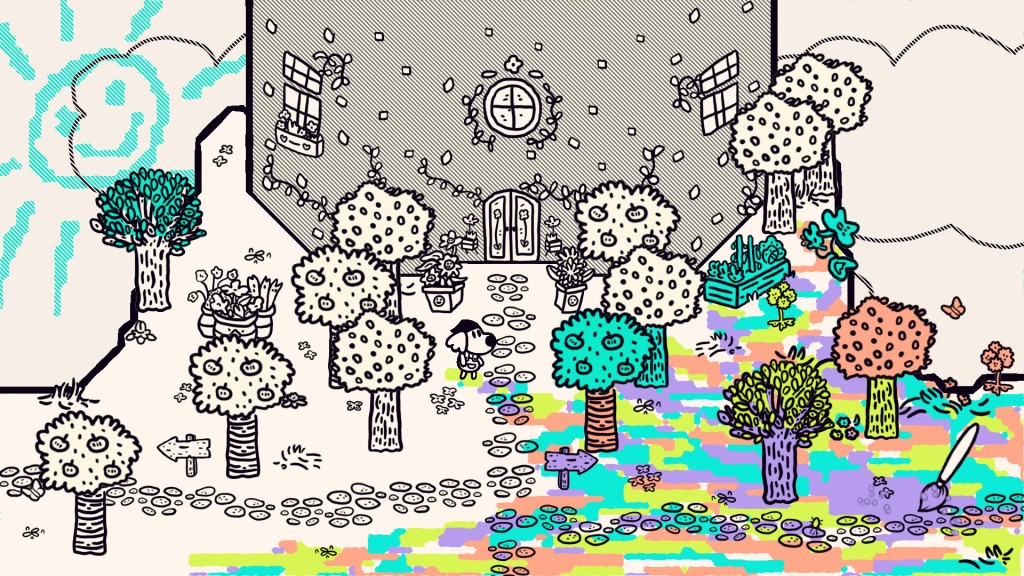
Chicory: A Colorful Tale is set in a cutesy world of talking animals where everything has food-themed names. This world places great importance on art and creativity, as a magical paintbrush has been passed down through generations. This paintbrush is what gives the world its color, and each new wielder puts their own artistic spin on the world. Suddenly, all of the world’s color disappears along with the current wielder. The player takes the brush and sets to paint everything back in. You travel through towns and varied environments, painting as you go and conversing with all the quirky characters.
What begins as a charming adventure with cute characters and storybook art quickly establishes itself as a much more mature tale. I always appreciate when a game tackles mental health topics in an intelligent manner. Chicory: A Colorful Tale is a game about self-doubt, imposter syndrome, depression, and isolation. The drive to create can lead to perfectionism and overly-harsh self-criticism that spirals into deep insecurity. The characters in the game battle these inner demons, but there’s no magic fix. The story is deeply emotional and its core themes will resonate with many players.
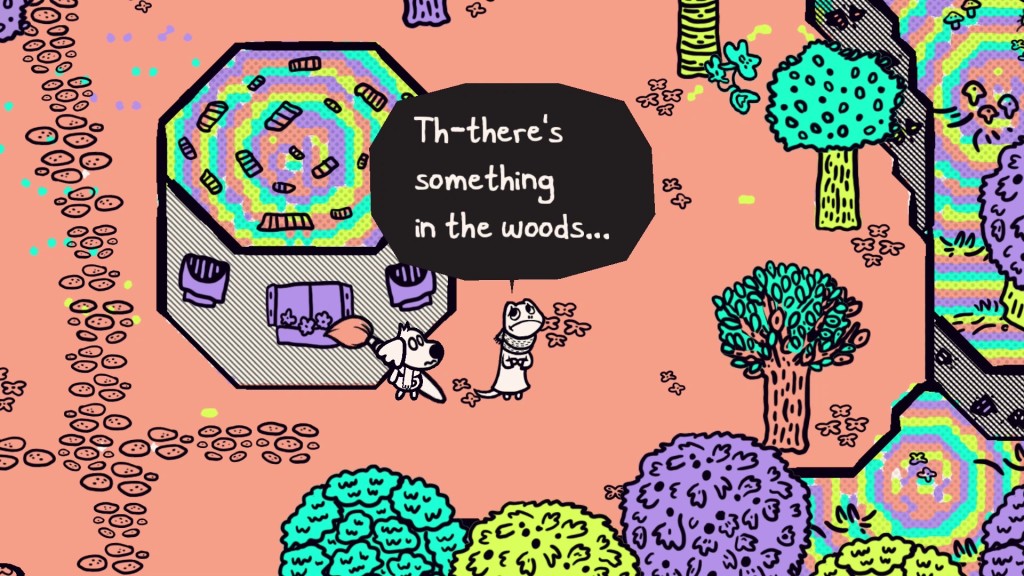
The main hook that sets Chicory: A Colorful Tale apart from other top-down adventure games is the painting mechanic. Along with controlling the main character, you also control the paintbrush that they wield. You use it to fill in color on landscapes, buildings, people, or whatever you want. You can acquire alternative brush styles that let you use it like a paint bucket or to plaster patterns as you go. There’s something so satisfying about filling in each area and leaving a paint trail wherever you go. Revisited areas have a distinct visual indicator of what you did there based on where you left trails of color.
Chicory: A Colorful Tale is absolutely full of things to do. Aside from the main story there’s a good number of side quests and collectibles to find. You can find clothes to show-off your own personal sense of style, or find lost kittens that can be given back to their parents in exchange for furniture sets, or collect litter that can be turned in for other goodies. The side quests are fun little distractions to engage further with the world and its characters. And the best part about all of this is that it never feels necessary. There’s no stats or upgrades, everything is purely aesthetic. You can choose to collect everything and complete the side quests, but there’s no obligation to, and I think that was a great choice for a game like this.
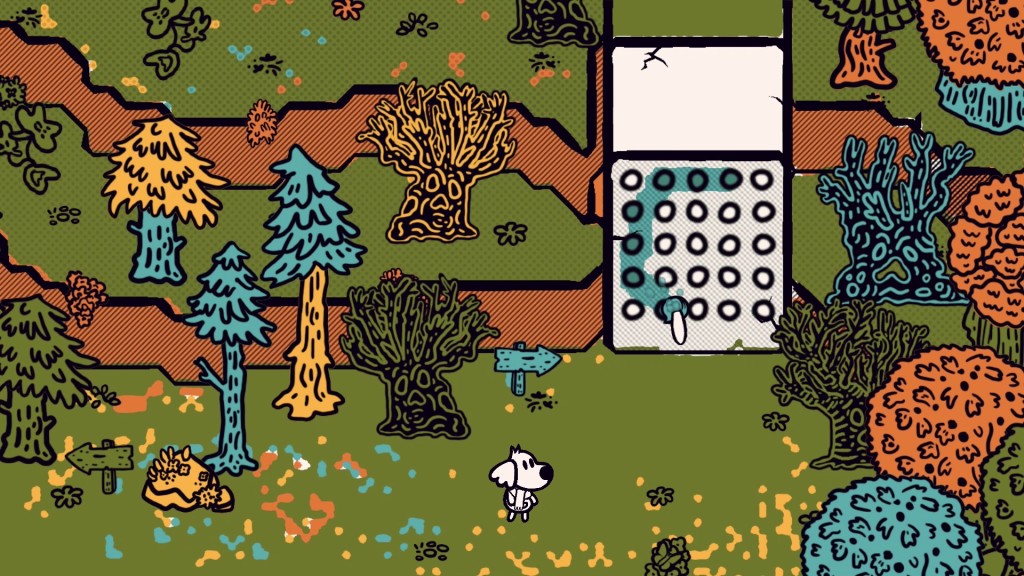
Painting the world is inherently relaxing. There’s no wrong way to do it, and you can mess around however you like. There’re no enemies to contend with and most of the game’s environmental puzzles are fairly simple. As you progress your paint becomes a tool. You can use it to make certain plants grow or create paths where you couldn’t go before. The game commits further to being a chill painting adventure as there are a ton of phone booths to use that can give you hints of where to go and what to do at any given point in the game. It’s clear that the creators of Chicory: A Colorful Tale did not want players to get stuck or frustrated, and this is evident by the lack of combat.
As previously mentioned, there are no enemies in the game to contend with. But there are a handful of boss fights that heighten the tension of the game exponentially. At the end of each chapter, you’ll enter a pitch-black room inhabited by an unholy monstrosity. The juxtaposition between these sections and the rest of the game is fantastic. The sheer panic as you run around and dodge projectiles plays so well into the game’s structure and themes. But even if the fights feel intense, they are very forgiving. You can’t really die, only lose a tiny bit of progress on the current phase. And there are options that you can enable to become invincible if these fights are too difficult. I think this was a good choice as these difficulty spikes might be off putting to players who were looking for a more chill game. I loved the adrenaline rush of these fights, and a huge component of that is the music.
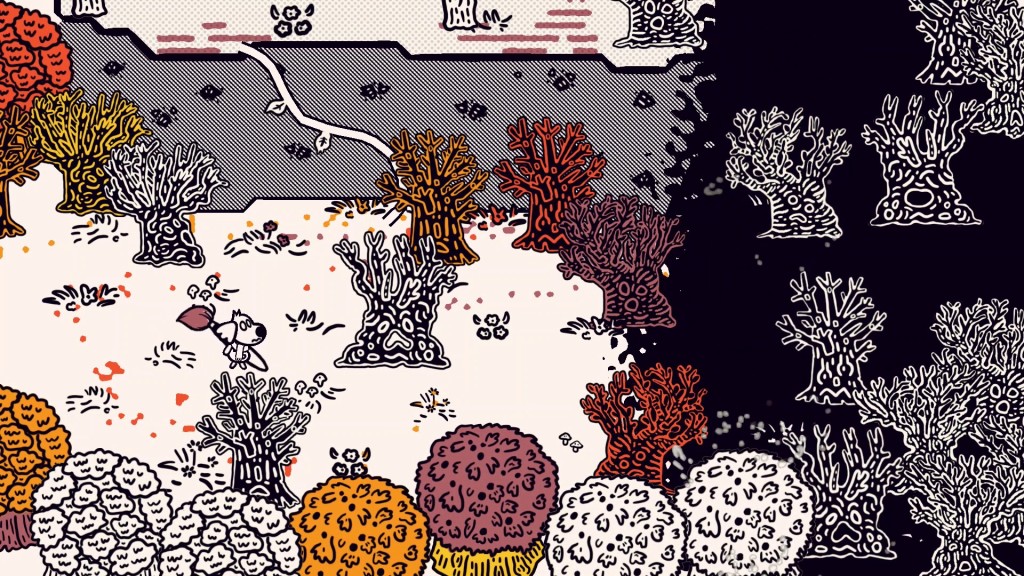
Most of the game has a nice mix of relaxing instrumental music. Tracks are calming compositions of flutes, pianos, and violins. But as you enter the boss chamber, the soundtrack morphs into an electronic chaos as synths and fast-paced drums dominate the tracks. The music throughout Chicory: A Colorful Tale is stellar and varied, I’ve already added some of the songs to my playlists. Lena Raine has done a wonderful job capturing the motifs of the game and applying them through music. I believe that she is one of modern gaming’s best composers, and I hope she becomes as prolific as the all-time greats. I may start playing games based on the inclusion of her music alone.
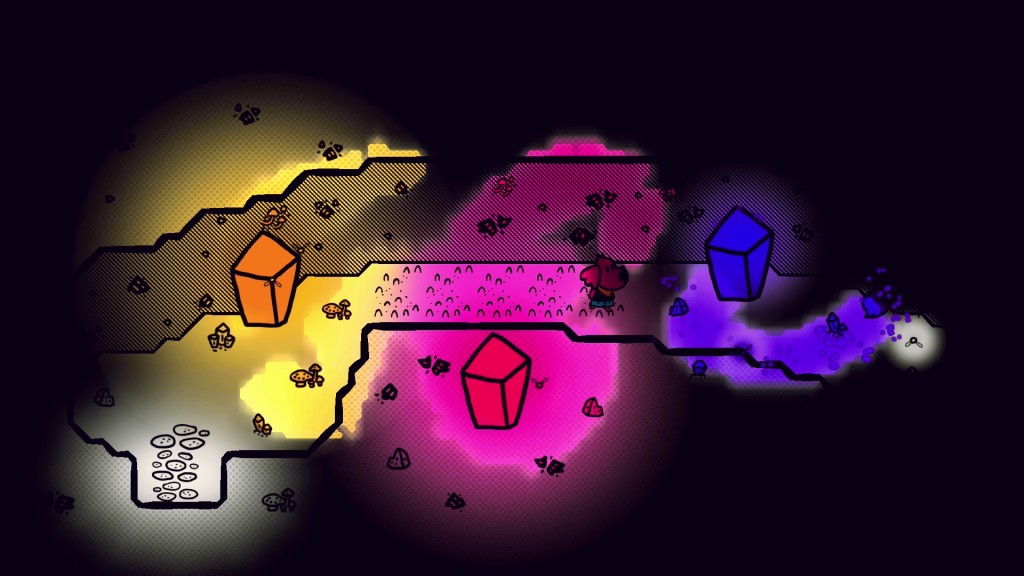
Chicory: A Colorful Tale is a perfect blend of elements to create a one-of-a-kind cozy experience. It’s a giant coloring book filled with adventure and charming characters. The story is cute and heartwarming, but its mental health themes are very real and will be relatable for much of the game’s audience. While the game’s slower pace and lack of action may not appeal to some, I had a great time restoring color to the world. It is for these reasons that I give Chicory: A Colorful Tale a 9/10. Look no further if you have been wanting a cozy adventure, Chicory: A Colorful Tale is the perfect game to relax with.